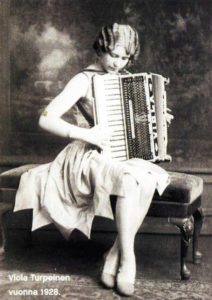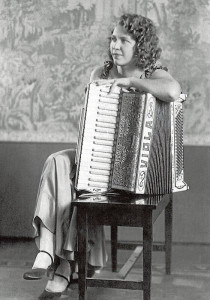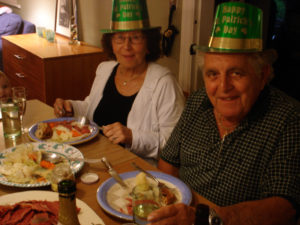
I have a distant cousin out on the distant Great Plains whose company I enjoy but who I’m sure would not be surprised to read, should he read this Book of Days, that I don’t see eye to eye with on many matters. He likes walls where I do not, he sees good leadership where I am appalled daily, and he can be quite vocal about these things on Facebook––which is a large part of what has pushed me away from what, years ago, was a fun way to pass some time each day, keeping in touch with family and old friends. I view Facebook as more a business obligation these days, not an enjoyment. And so I don’t spend much time there. But occasionally I do see his posts, like the one just the other day about immigrants to this country needing to conform their ways to our ways (whatever our ways are). Again, we have different views here. If his grandparents (all immigrants from Italy, like mine) had followed their grandson’s rules, we wouldn’t be celebrating the Feast of San Giuseppe (St. Joseph’s Day) on the 19th of this month. Even our celebration of St. Patrick’s Day on the 17th would be doubtful. And certainly no one would be celebrating St. Urho’s Day today on the 16th of March.
I love our cultural differences and I love learning from people of other cultures and I love celebrating with them. I think of Rose, who cares for my pal Mike like he was her own family. She makes pumpkin soup for New Year’s, a tradition she brought from her Haitian homeland; now Mike eats pumpkin soup on New Year’s too. She just got her green card last week; she’s so happy about it. And I think of Tari, from Pakistan, who has a small restaurant downtown, open only for breakfast and lunch. In some of my lowest days, I’d go there for breakfast, and Tari would lift me up with her kindness and send me home with dinner, too. And today, on the 16th, I will be celebrating St. Urho’s Day with all the folks around these parts who emigrated here from Finland. Between Lake Worth and our neighboring city of Lantana, we have more Finns than anywhere save Finland, and it is from one of those Finns that I learnt the story of St. Urho, whose day is celebrated every March 16 with the wearing of the purple and the green. St. Urho, known no where else but amongst Finns, is celebrated for saving the vineyards of Finland by driving the grasshoppers from them. His simple incantation in Finnish, Heinäsirkka, heinäsirkka, mene täältä hiiteen (“Grasshopper, grasshopper, go to Hell”), is what drove those grasshoppers out of Finland and what saved the grape harvest and thus the wine (which also happens to be a big part of the day).
What’s that? You’re not familiar with the wines of Finland? Or with Finland’s historic grasshopper problems? Or with St. Urho himself? This is understandable; the fact is it’s all a fictional legend. And truth be told, it may have something to do with a healthy competition with the saint we’ll remember the next day who drove the snakes from Ireland and who we celebrate with the wearing of the green… but this is what the Finns brought us: St. Urho. And a fascinating language that is like no other, and Jean Sibelius, and korvapuusti––the delicious spiral buns flavored with cinnamon and cardamom that we buy at our local Finnish bakery, where the tall old Finns gather each morning to drink coffee and converse in their strange tongue. Some of them will remember today and maybe listen to recordings of the music of Viola Turpeinen Syralia, the legendary Finnish American accordionist who lived here in Lake Worth in the 1950s. She called her house “the Home that Polka Built,” and if you watch the video below, you’ll see eventually a photo of Viola outside her Lake Worth home while you listen to one of her ethereal accordion songs.
Were the old timers of Lake Worth nervous about all the Finns moving into their neighborhoods back then? Who knows. All I know is I love stories and I am not so fond of the isolation that walls create. Me, I’m more inclined toward bridges, knowing it is these bridges between cultures that allow me to love Viola’s music today for St. Urho’s Day and to enjoy Irish soda bread tomorrow for St. Patrick’s Day and on Tuesday, for St. Joseph’s Day, I’ll hope you’ll find some zeppole with which to celebrate… for that is one of my Italian heritage’s contributions to our great American culture, one of the bridges that bring us all together.
“Ellin Polka” by Lake Worth resident Viola Turpeinen Syralia. The photo at the opening is of Viola, early in her career, 1928. She was the first famous female accordionist in the States, and is considered the first to record her music. Another of my favorites of Viola’s songs is the beautiful Unelma Valssi, the Dream Waltz. I listen to it and it carries me far beyond Lake Worth, to Lapland and a cold and dreamy landscape.

